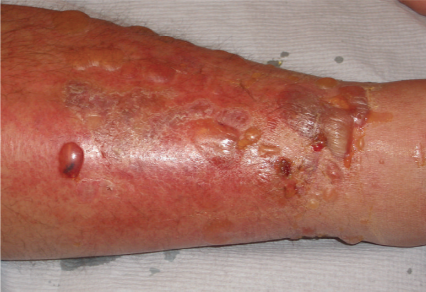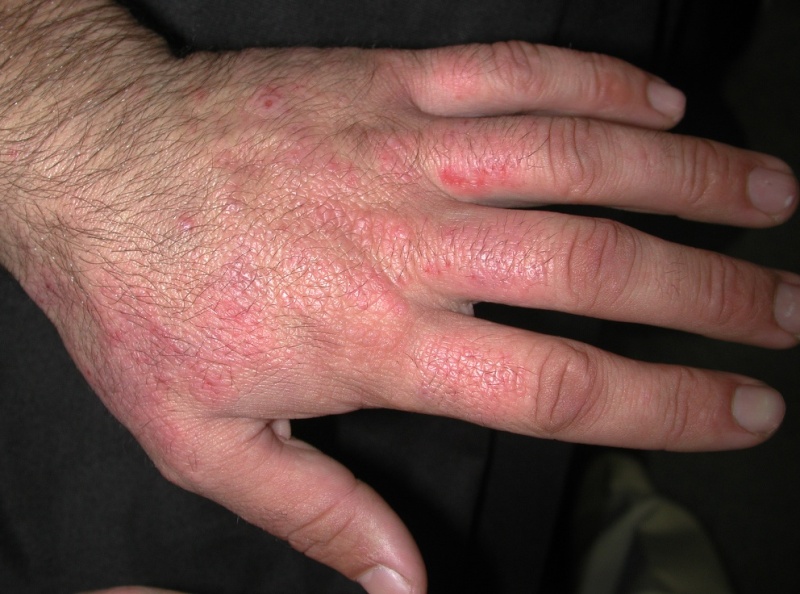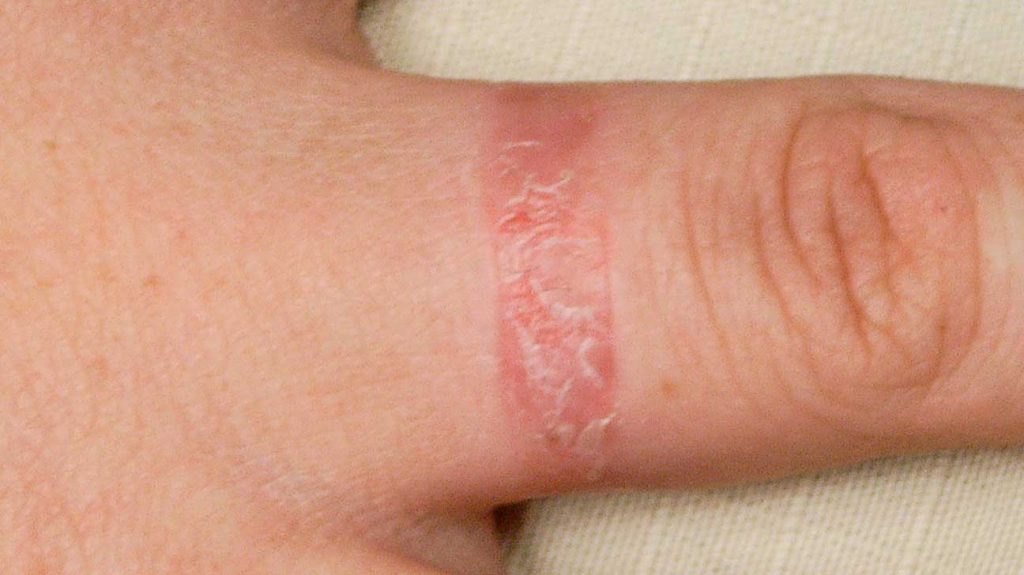
What is contact dermatitis?
Contact dermatitis is caused by exposure of the skin to an irritant or allergen. Irritancy
is commoner than allergy. Impaired skin barrier function facilitates penetration of
irritants and contact allergens into the epidermis, e.g. in atopic individuals, neonates,
or older patients. Exposed body sites are often affected by contact dermatitis.
Occupational contact dermatitis occurs more frequently in cleaners, hairdressers,
nurses, homemakers, caterers, and builders.

Irritant contact dermatitis
Urine and faeces are irritants—the buttocks and perineum are affected in incontinent
patients. Detergents, alkalis, solvents, and cutting oils are also potential irritants.
Some plants contain light-sensitizing furocoumarin chemicals that are phototoxic in
the presence of sunlight.

Allergic contact dermatitis
Pathogenesis: delayed (type 4) cell-mediated allergic reaction. The patient has to have
prior exposure and sensitization before developing an allergic reaction characterized
by itching, erythema, vesiculation, and scaling. For common cutaneous allergens.
Always consider patch testing in chronic hand dermatitis, facial dermatitis, pruritus
ani (when over-the-counter medicaments may have been used), and dermatitis
associated with chronic leg ulcers. Patch tests are applied to the back on day 0,
removed and read on day 2, and read again on day 4 or 5. An eczematous reaction
indicates a positive result.
What should I ask?
• Take a history, as recommended. Ask about the occupation and hobbies; is the
patient an obsessive handwasher?
• Find out what the patient uses—cosmetics, perfumes, hair dyes, over-the-counter
medicaments, etc. remember you can become allergic to a product that has been used
for some time.
• Explore what provokes the rash. Does the problem improve when not in contact
with the preparation, e.g. weekends, holidays?
• Is there a history of atopic eczema (irritant contact dermatitis is commoner than
allergic contact dermatitis in atopics).
What should I do?
• Exclude 2° infection, particularly in genital dermatitis.
• Minimize contact with irritants, e.g. avoid soap, and use gloves.
• Prescribe emollients.
• Reduce inflammation with a potent corticosteroid ointment. A short course of
prednisolone may be needed in severe blistering reactions.
• Refer for patch testing if you suspect an allergic contact dermatitis.
• If the patient is allergic to something, any contact with that allergen will produce a
reaction, and complete avoidance is essential. An inevitable consequence of this
diagnosis may be a change of occupation.